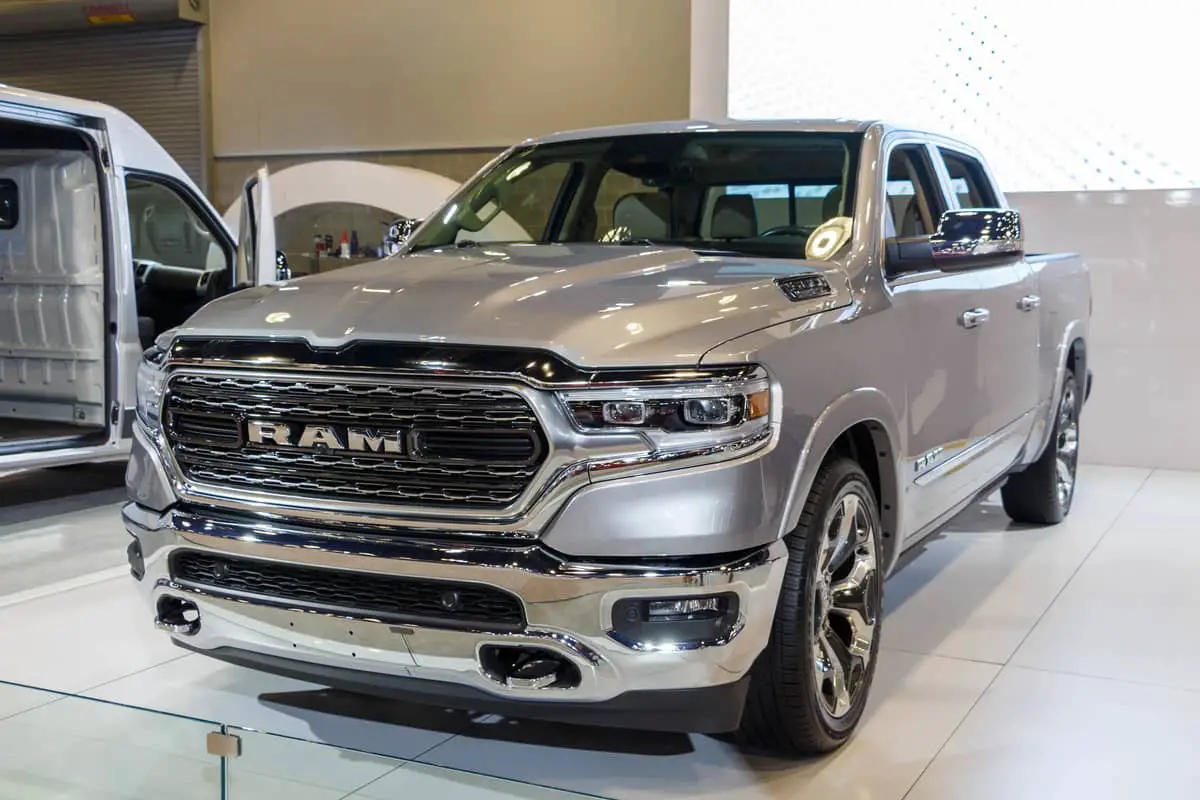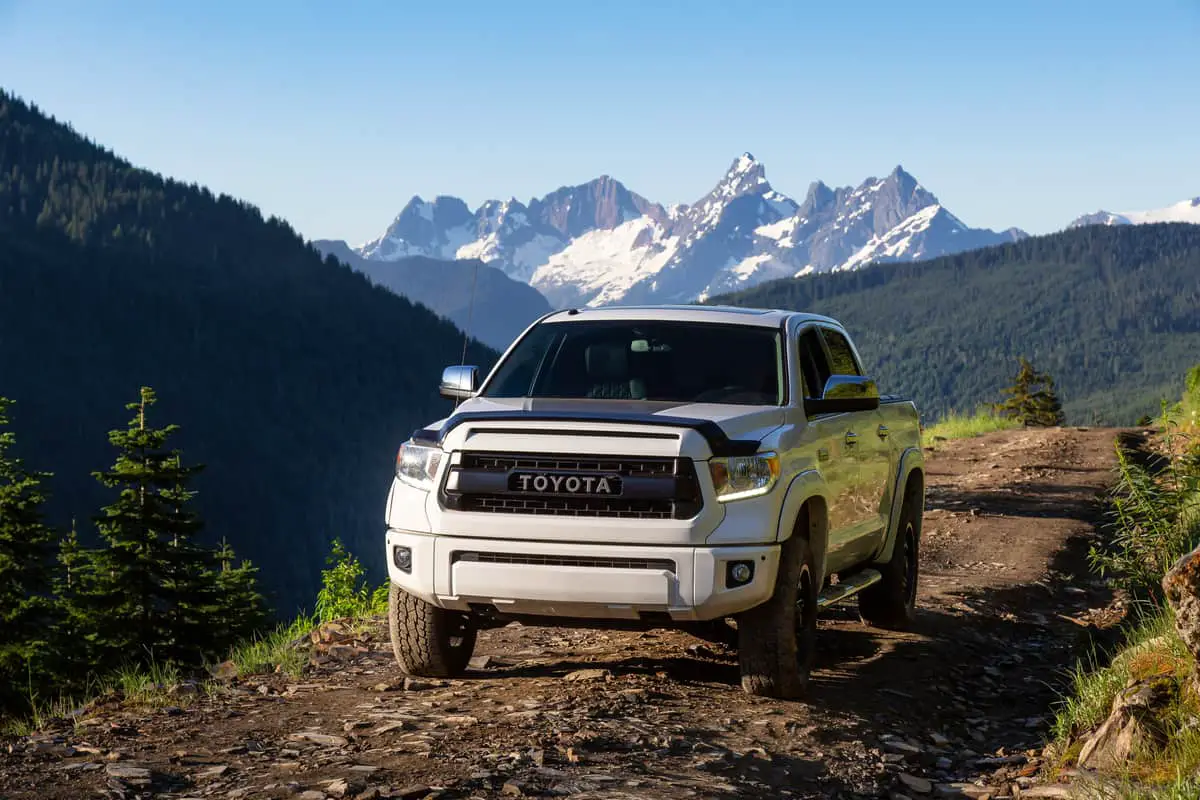Technological progress is responsible for the sleek-minimalist design of new vehicles, but some vehicles have yet to adopt the popular new design trend. Seeing vehicles with archaic technology like radio antennas can make you wonder why pickup trucks still have antennas?
Pickup trucks still have antennas because wires receive the best AM and FM radio signals. However, newer vehicles use glass antennas that are built into the car windows. While glass antennas offer a cleaner aesthetic, the signal is worse than traditional wire antennas.
If your mind is still racing with questions about pickup truck antennas, stick around! I’m going to answer more related questions like why pickup trucks require better radio signals, the length of the antenna matters, and how easy it is to repair a radio antenna.

Why Do Pickup Trucks Need Better Radio Signal?
Pickup trucks need better radio signals because many of the pickup truck customer base live rurally, where the radio signal is poor. A rural market with poor radio signals leads pickup truck manufacturers to trade sleek designs for more functional radio antennas.
Despite pickup trucks becoming increasingly popular in North American cities, rural customers still make up a large portion of the pickup truck customer base.
GM Vice President of global product programs, Tim Herrick, spoke on radio antennas with GM Authority: “[Wire antennas] were something where we listened to the voice of the customer, and they want the ability to get a signal.”
The smaller glass ones work within the city, so they’re perfect for small cars, which are most often used for driving in cities. However, a majority of pickup truck driving happens in rural areas.
Is a Longer Antenna Better?
Some antennas on available pickup trucks appear to be particularly long. Believe it or not, the length of an antenna impacts the quality of the radio signal it can receive.
The longer the antenna, the better radio signal you will receive. Usually, pickup trucks have a 32-inch (81 centimeters) radio antenna. 32-inches (81 centimeters) is the gold-standard length for FM radio antennas.
Are Wire Antennas Cheaper To Repair Than Glass Antennas?
Now we understand why pickup trucks still have antennas. But are the wire antennas commonly used on pickup trucks easier to maintain than the glass antennas used in most cars?
Wire antennas are cheaper and easier to repair than glass antennas. Glass antennas are significantly more difficult to repair because they’re built into the glass. However, wire antennas are more likely to be damaged because they’re on the exterior of the pickup truck.
How Much Does It Cost To Repair a Radio Antenna?
It costs about $225 to repair a radio antenna. Quotes online vary between $200 and $250 for a typical radio antenna repair. The cost of parts to repair a radio antenna is about $160, so if you’re the DIY type, you can save about $65 in labor costs.
If you’re looking to repair your pickup truck’s antenna yourself, I recommend using the TN TrunkNets 31″ Stainless Black Antenna MAST + Radio Antenna Base Repair Kit (available on Amazon). I like this repair kit because of the antenna size. As we know from earlier, a 31-inch (79 centimeters) antenna is about the right size to get a clear radio signal in a pickup truck.
Why Do Pickup Trucks Have Two Antennas?
Some pickup trucks have two antennas to extend the range of their signal. With one 32-inch (81 cm) antenna, you may experience poor signals. However, your range is greatly increased with an antenna on each side of the truck because the radio signal is not interrupted by your truck on either side.
Two antennas also allow you to avoid dead radio zones, which are especially common with satellite radio. When one antenna hits a dead zone, your pickup truck radio system can defer to your second antenna to retrieve a signal.
To maximize the utility of two radio antennas, space them out as much as possible. A common and effective dual antenna setup is to have one at the back of your pickup truck and one at the front.
3 Ways To Improve Your Pickup Truck’s Antenna Signal
Even if you have a full 32-inch (81 centimeters) antenna, it’s still possible to experience poor signals. Thankfully, I’m here to help!
Here are three ways to improve your pickup truck’s antenna signal:
- Consider the antenna location. Your radio antenna should be as far away from your pickup truck’s engine compartment as possible. The electrical components can cause signal interference with your radio antenna. This is why you see many an antenna at the rear of a pickup truck.
- Install a signal booster. Radio antenna signal boosters work exactly as the name implies—they boost the strength of your radio signal. Additionally, radio antenna signal boosters are usually easy to install and fairly inexpensive.
- Make sure your antenna is extended. Sometimes the root of your problem lies in the antenna unknowingly collapsing. Exterior radio antennas can get pushed in without you knowing, in which case you’ll lose your desired signal strength. Try extending your radio antenna to see if it unknowingly folded in on itself.
If you want a suggestion for a radio antenna signal booster, you can get the DORHEA Universal Car Stereo Radio FM Antenna Signal Booster Amplifier Amp (available on Amazon). This radio antenna booster ticks all my favorite boxes: it’s cheap and easy to install!
What Is the Shark Fin on Top of Trucks?
The shark fin on top of trucks is a roof antenna. Shark fins are a discreet, aesthetically pleasing way to incorporate an antenna into a vehicle’s design. These antennas are effective for location tracking, satellite radio, and 4G, AM, and FM radio.
Shark fin antennas receive better location tracking, navigation, and communication signals. However, the traditional wire antenna remains the most effective AM and FM radio antenna.
Since wire antennas are better for AM and FM radio, you won’t see shark fin antennas overtaking wire antennas any time soon. However, some newer pickup trucks use a combination of wire and shark fin antennas.

Final Thoughts
Catering to a rural customer base involves adding unique features to a rural lifestyle. Wire radio antennas allow a rural customer base to easily access AM and FM radio because they significantly enhance the signal.
Will pickup trucks catch up to the non-antenna aesthetic seen on many cars? As radio signal is more widely distributed, antenna technology increases, and music streaming apps decrease the need for radio, pickup trucks may switch to a glass antenna. However, for now, wire antennas are here to stay.
